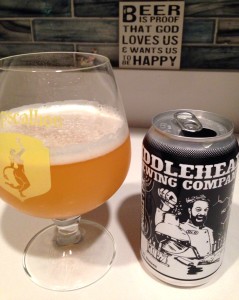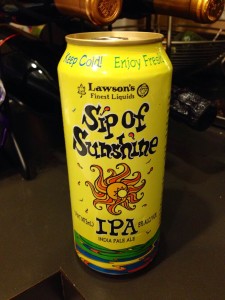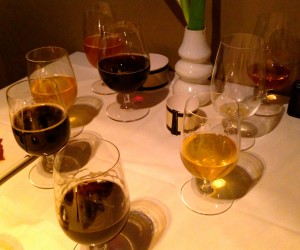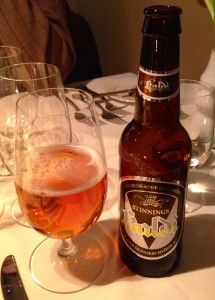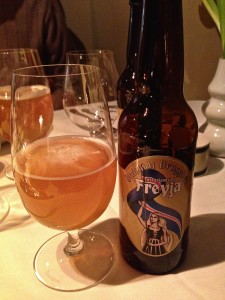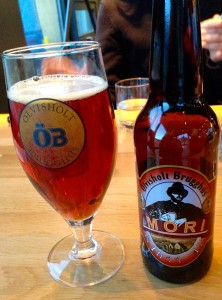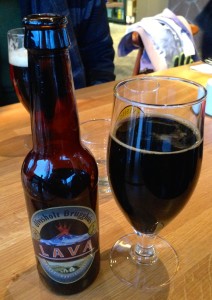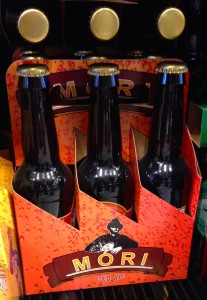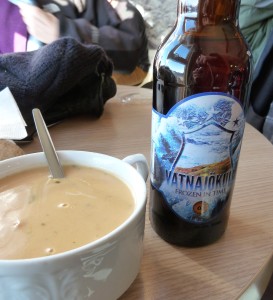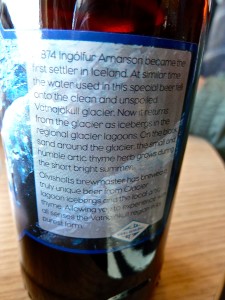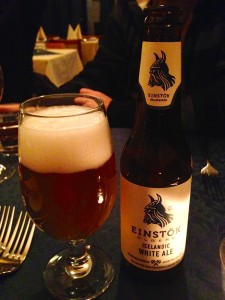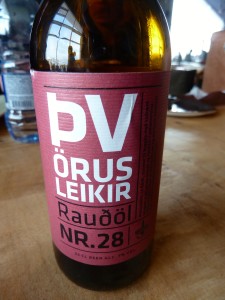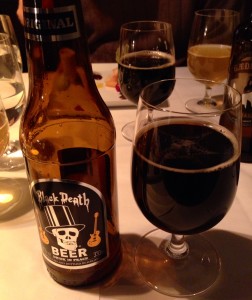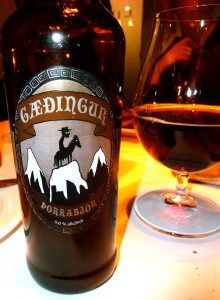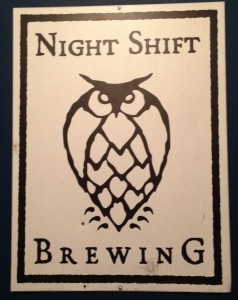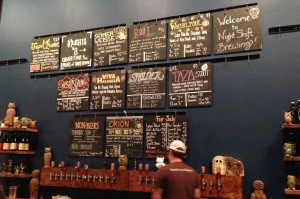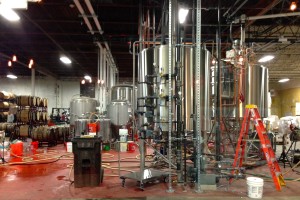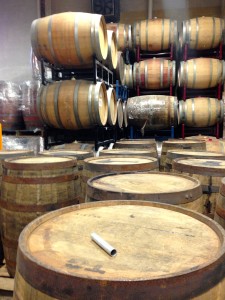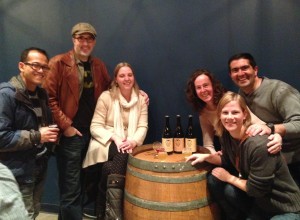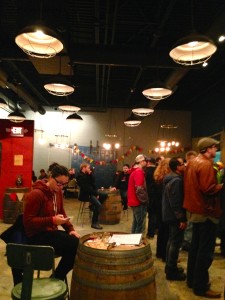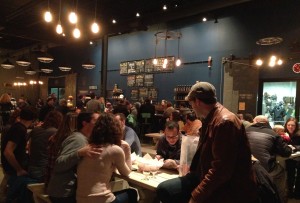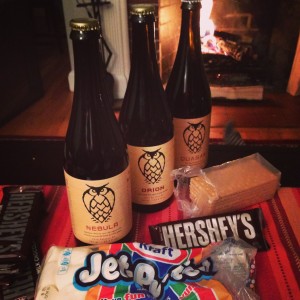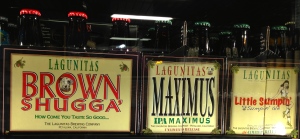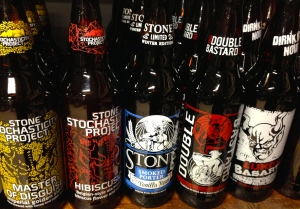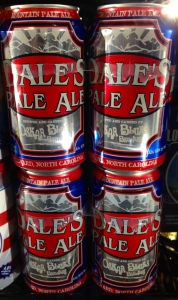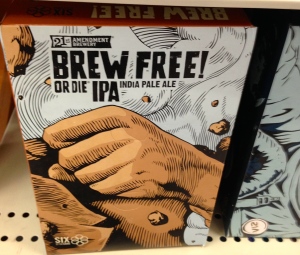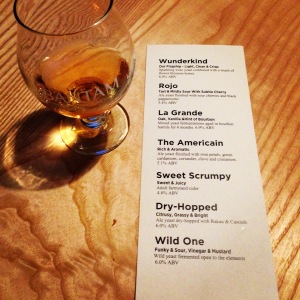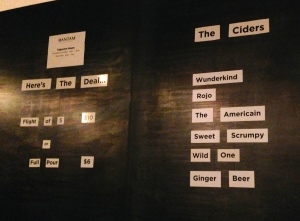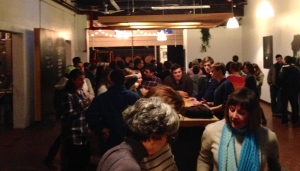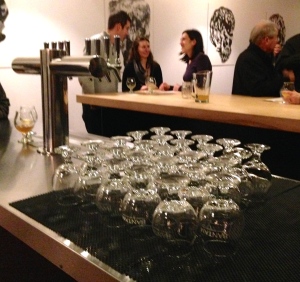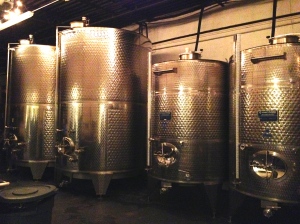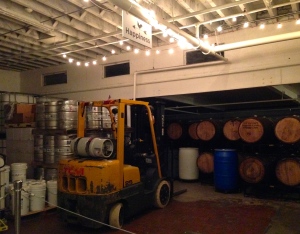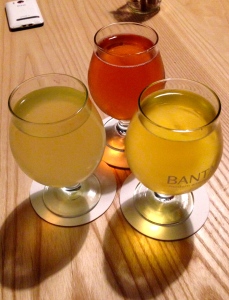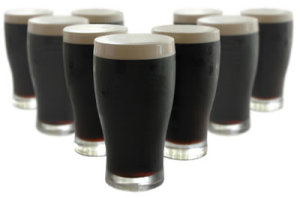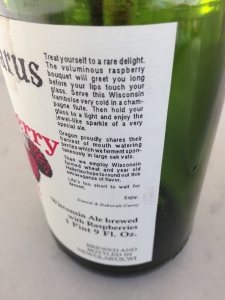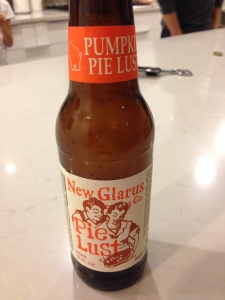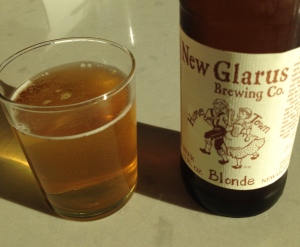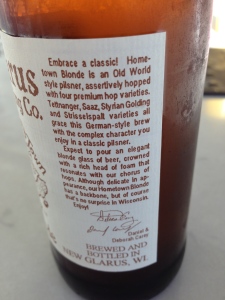The IPA – it started as a tale of two continents, but survives today as a rivalry between two coasts. Craft beer store shelves have become lined with IPAs proclaiming a style of either “West Coast” or “East Coast.” Are these breweries merely marketing their regional pride, or are they offering a helpful description of what their IPA may offer to the educated consumer?
While these labels often do come down to marketing, there are a few general rules of thumb for designating an IPA “East Coast” or “West Coast.” West Coast IPAs tend to be dominated by the hops profile and finish dry. The malt profile is simple, straight-forward, and subtle. An East Coast IPA, on the other hand, typically features a much more complex malt bill that balances the hop profile, and makes the beer a bit darker in color and sweeter in taste. East Coast IPAs may taste more of tropical fruit, while West Coast IPAs may taste more of pine.
Beer enthusiasts attribute these differences to the proximity of West Coast breweries to the Pacific Northwest hop fields, which grow Cascade, Centennial, Chinook and Columbus hops, while East Coast brewers incorporate more “spicy” European hops and specialty malts into their recipes. Dogfish Head 60 Minute and the Smuttynose IPA are examples of classic East Coast IPAs, while Green Flash West Coast IPA and Stone IPA serve as their counterparts on the West Coast.
Vermont has become a haven for the East Coast style, and since many of its breweries do not distribute outside VT, a destination for beer tourism. While I do have plans for a rather ambitious trip, my urgency was kindly abated by a partner at my law firm who wisely chose to deposit 3 cans of VT beer on my desk the day I had two huge filings to complete. I take assignments from all partners very seriously, so I immediately started my research regarding these 3 cans.
The first two were from Fiddlehead Brewery in Shelburne, VT. The brewery releases its rotating selection of beer in the form of cans or growlers from the brewery itself, and provides draft beer for VT taprooms and restaurants. Fiddlehead’s owner and chief brewer Matt Cohen focuses on well-balanced beers, and enjoys incorporating exotic ingredients into his brews. Both brews have been cited as exemplars of East Coast style, in the double form.
Mastermind pours a medium yellow gold, with a nose of citrus. The taste is dominated by grapefruit and lemon zest, balanced with malty caramel and only hints of pine. A decent amount of carbonation contributes to a medium body and smooth finish. Mastermind clocks in at 8.1 ABV. Compared to Mastermind, I thought Second Fiddle tasted more hop forward, with tropical, citrus zest and mild pine notes, particularly in aroma. While Second Fiddle was less malty and sweet in flavor, it was still very well balanced. Both IPAs are big, juicy and clean.
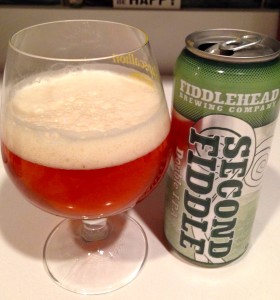
The third, and my favorite, was Sip of Sunshine IPA from Lawson’s Finest Liquids, a small batch artisanal microbrewery in Warren, VT. The brewery’s 7 bbl system is closed to the public, and its website explains the very complicated etiquette required to procure its beer. Sip of Sunshine, actually brewed at Two Roads Brewing in Stratford, Connecticut, pours golden-amber in color and smells of fruit, both citrus and tropical. The taste follows, with notes of passion fruit, grapefruit, and pineapple, balanced by bready malt and mild hop bitterness. The brew features moderate carbonation, creating a crisp mouthfeel.
Compare those descriptions to that of Pliny the Elder, a double IPA from Russian River Brewing in Santa Rosa, California. People tend to describe the hops character of the beer as apparent up front, and sharp, with pine, resin, grassy and floral notes. There is some background grapefruit flavor, but the taste is less tropical than its East Coast counterparts, and gives way to a lasting bitter finish.
These rules of thumb for identifying “East Coast” versus “West Coast” styles will vary by brewer preferences and regional availability of ingredients. More importantly, breweries will market their beers in a way that will sell more beer. With increased experimentation and creativity in recipes, it is likely that these two styles will blur, if they even exist at all.

